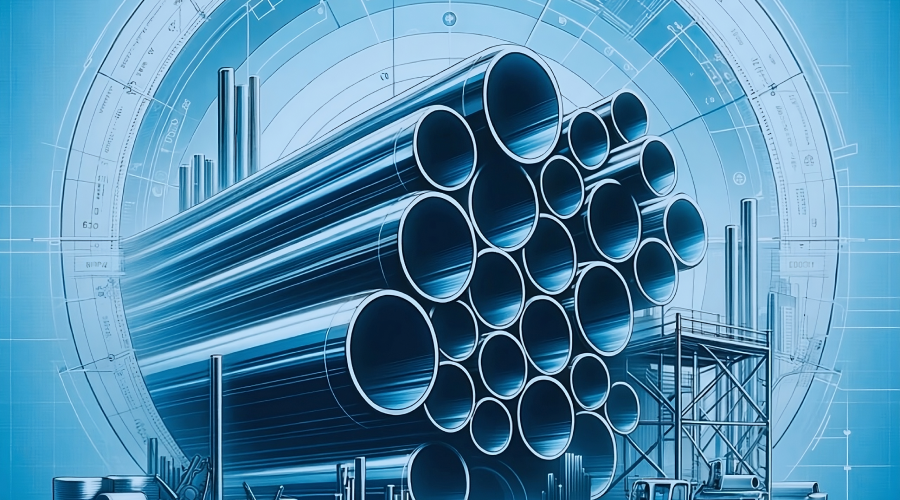India–US Trade Tensions Rise Over Steel and Auto Tariffs NMDC Limited reports a 38% drop in Q4 FY24 consolidated net profit RINL to Raise $23 Million Through Land Sales Amid Crisis

As the steel industry navigates 2024, it is undergoing a significant transformation, marked by innovative advancements and shifting market dynamics. This evolution reflects broader economic trends and technological progress reshaping the steel production and consumption landscape.
One of the most prominent trends in the steel market this year is the rapid adoption of advanced technologies. Automation and digitalization are revolutionizing steel manufacturing processes. Modern steel mills are increasingly integrating robotics and artificial intelligence (AI) to enhance production efficiency and precision. AI-driven systems are optimizing various aspects of the production cycle, including scheduling, maintenance, and quality control. These advancements are not only improving operational efficiency but also reducing costs and minimizing human error. The positive impact of these technologies on operational efficiency is a testament to the industry's potential for growth and innovation.
In parallel, the steel industry is placing a strong emphasis on sustainability and environmental stewardship. Green steel technologies are emerging as a critical focus area. These technologies aim to reduce the carbon footprint of steel production significantly. Innovations such as hydrogen-based direct reduction are at the forefront of this movement. This method uses hydrogen instead of natural gas to convert iron ore into steel, reducing carbon dioxide emissions. Additionally, electric arc furnaces (EAFs), which recycle scrap steel using electricity, are being upgraded to improve their energy efficiency and reduce their environmental impact. These advancements are critical as the industry faces increasing pressure to comply with stringent environmental regulations and respond to growing consumer demand for sustainable products.
Another significant development is the rise of advanced materials and processing techniques. Steel producers are investing in the development of high-strength, lightweight steels designed to meet the evolving needs of various industries. These materials offer enhanced performance and durability, which are crucial for applications in the automotive and construction sectors. For example, advanced high-strength steels are improving fuel efficiency in vehicles and extending the lifespan of infrastructure projects. The industry's commitment to innovation and its response to changing market demands is a reassuring sign of its adaptability and resilience.
Market dynamics in 2024 are also being influenced by global supply chain disruptions and fluctuating demand. The steel industry has been grappling with challenges related to supply chain stability, exacerbated by geopolitical tensions and trade disputes. In response, steel producers are diversifying their supply chains and exploring alternative sourcing strategies to mitigate risks and ensure a steady supply of raw materials. This proactive response to supply chain disruptions is a testament to the industry's ability to manage risks and maintain stability.
Steel demand is experiencing notable fluctuations due to varying economic conditions across different regions. While some areas are seeing strong growth driven by infrastructure development and industrial expansion, others are facing slowdowns due to economic uncertainties or shifts in industry focus. For instance, China's steel demand has been influenced by the country's efforts to reduce overcapacity and transition towards a more sustainable economic model. Conversely, emerging markets are experiencing increased demand for steel as they invest in infrastructure and urbanisation projects.
Price volatility remains a significant concern for the steel industry. Steel prices are affected by fluctuations in raw material costs, such as iron ore and coking coal, and energy prices. The cost of these critical inputs can vary widely, impacting the overall cost structure of steel production. Market speculation and economic factors also contribute to price volatility, making it challenging for producers to maintain stable profit margins. As energy markets experience volatility, steel producers must navigate these challenges to manage their cost structures and remain competitive.
Sustainability is becoming increasingly important in the steel industry, driven by regulatory pressures and market demand. Governments and regulatory bodies worldwide are implementing stricter environmental regulations, compelling steel producers to adopt cleaner technologies and practices. Compliance with these regulations is essential for avoiding penalties, enhancing the industry's reputation and appealing to environmentally conscious customers. As a result, there is a growing emphasis on integrating sustainable practices into steel production and demonstrating a commitment to reducing environmental impact.
In summary, the steel market 2024 is characterised by a blend of technological innovation and evolving market dynamics. Advances in automation, green technologies, and advanced materials shape the industry's future, while supply chain disruptions, fluctuating demand, and price volatility influence market conditions. As the industry adapts to these changes, steel producers must stay agile and forward-thinking to leverage emerging opportunities and address the challenges ahead. Staying informed about these trends will be crucial for stakeholders seeking to successfully navigate the evolving steel landscape.
Also Read : Budget 2024 Expectations: Steel Companies Seek Long-Term Policy Measures for Sustainability Steel makers face headwinds from coal price upsurge